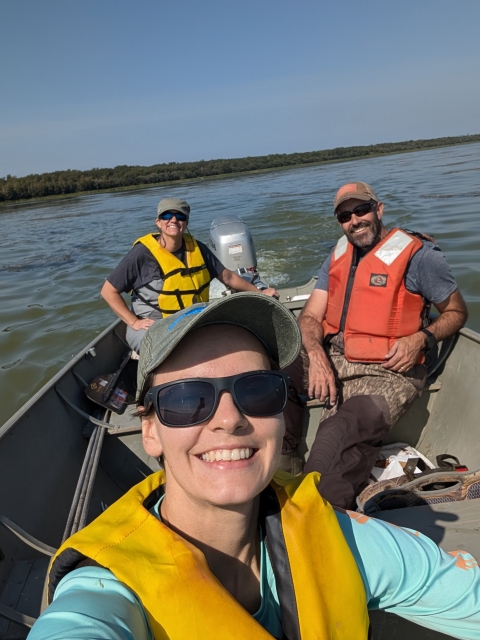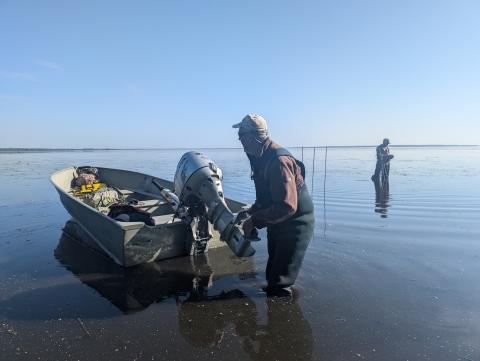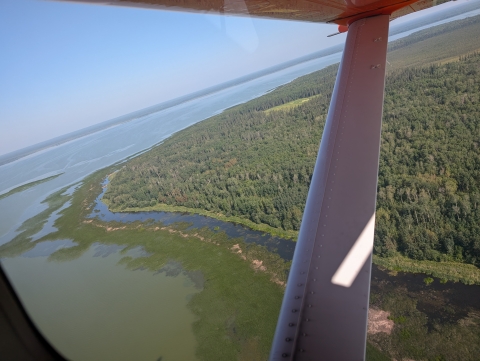Traveling down the dirt road that winds its way through the boreal forest to the boat launch, the anticipatory excitement is buzzing that first morning. Everyone is ready to get on the water and start looking for ducks, especially after traveling so far to reach this banding location. Our crew is composed of four people: Terry Liddick, Pilot Biologist and crew lead at this location for nearly two decades, Chris Cain, Migratory Birds Wildlife Biologist and the new crew lead starting this year, Adriana Levia, Biologist with the Coastal Program in the Texas Gulf, and myself, Invasive Species Strike Team Lead in New Mexico.
The lake is as beautiful as it is massive. With a total surface area of 111 square miles, we can see vast shorelines stretching into the faded-blue distance as we launch. Away from shore, large rafts of diving ducks and gulls bob in the waves. Given the immense size of the lake, the first few days of the project are dedicated to recon - with so much available habitat, we need to research where the ducks are hanging out to have the best chances of catching them.
On the water, Terry takes us around to show us sites that have produced the best yield for him in seasons prior. Our main target species are mallards, so we look for shallower areas near the shore where dabblers would likely forage. We also had the incredible opportunity to scope out the site from the air. Mark Koneff, Migratory Bird Surveys Branch Chief and Pilot Biologist flew us around the shoreline of the large lake so we could see the landscape and get an idea of how many birds were on the lake and where they were congregating. Then we had all the comprehensive information we needed to select our trapping locations!
I found that swim-in trapping is an exercise in patience. There is a delicate balance between having ducks interested in your site and scaring them off by moving in too quickly. Thankfully, our efforts eventually began to pay off. What a thrill I felt to pull up to the traps that first successful morning to find them filled with ducks!
Over the course of the month, we caught mallards, pintails, blue-wing teals, buffleheads, and even a Barrow’s goldeneye and a canvasback.
This was my first year participating in these banding efforts, and I absolutely loved learning about how to identify ducks in their eclipse plumage to sex and age classes. Across the plumage and beak of the bird, there are so many little hints in the coloration that let you glean information about the individual. It’s such a treat to be able to learn about wildlife in such an up close and personal way.
Other personal highlights included capturing ducks that have been banded in seasons prior, spending more time on a boat than I ever have in my life, and getting to visit a beautiful place with some great folks. Wildlife highlights included 10 black bears, 2 moose, a wood buffalo, grebes with fluffy chicks, river otters, and a surf scoter (a lifer for me!).
What a fantastic experience this was! Huge thank you to all our local collaborators from Alberta Forestry and the Metis Settlement, and the USFWS Migratory Bird Program, and more for making this all possible!






